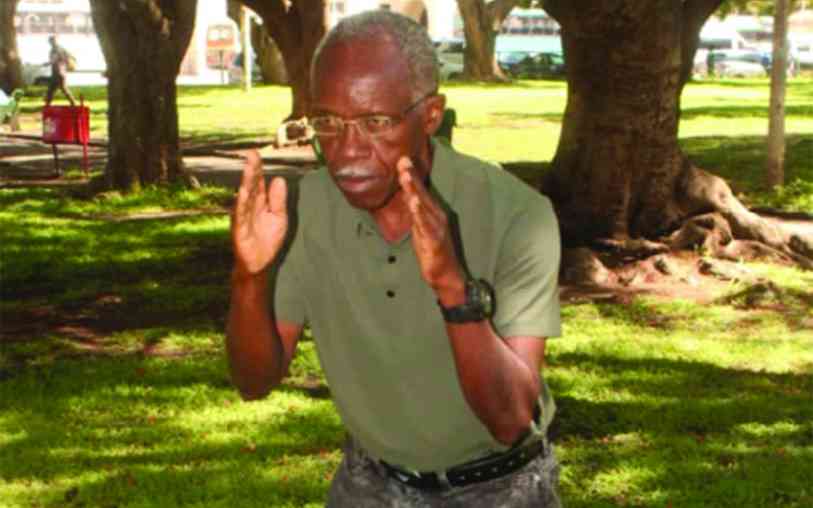
DUE to limited resources, among other reasons, development interventions often work with a few targeted beneficiaries hoping that new knowledge or practices can trickle to the entire community.
For instance, in a community of more than 1 000 households, an intervention can support 50 households to do sustainable agriculture.
Some interventions target vulnerable households hoping to improve their socio-economic status to match other community members.
Why working with a whole community is better than targeting a few beneficiaries
When trying to improve the viability of agroecology as a practice on small pieces of land, a few beneficiaries may not be able to produce enough quantities of traditional grains, groundnuts and other agroecology products to consistently meet market demand and expectations.
In this situation, it becomes necessary to convert the whole community into agroecology to ensue surplus quantities for both local consumption and marketing.
A few agroecology farmers may not be able to consistently participate in the market.
Consumers end up resorting to industrial products when they would have preferred agroecology and organic products.
- Organicare Zimbabwe seeks healthcare for all
- Zim farmers embrace agroecology
- edutainment mix:Perma-Art in impacting grassroot communities
- Farmers urged to venture into agroecology
Keep Reading
Another related scenario relates to the use of common pool resources such as pastures, landscapes, soils and water that are shared by everyone within communities.
Initiatives like water conservation will have more impact when practised by a whole community as opposed to individual farmers because many factors that deplete and pollute water cannot be handled by individual farmers.
This demonstrates that natural resources management cannot be achieved by one farmer in a whole community.
Neither can a single farmer, no matter how enterprising, influence the direction of a whole micro climate because some farmers in the same community may be growing crops using chemicals or importing exotic livestock breeds that end up contaminating local indigenous breeds.
Need to assess practices in different communities
Beyond working with a few beneficiaries, development organisations and government extension agencies can transform lives by working with communities to reflect on their diverse competing practices.
That can be a starting point in tracking local practices whose history is close to what is now called agroecology.
Such assessment and reflection can discuss questions like to what extent have indigenous local practices been infiltrated or changed by external practices or interventions either from the private sector or from non-governmental organisations (NGOs)?
Local communities have, for time immemorial, used manure, practised crop diversity and conserved forests without calling their practices agroecology.
They have been producing diverse products from these practices.
Conversations can extend to identifying products produced through these practices and the market for those products.
Which products were produced using these practices in the past, but are no longer produced that way?
The reflections may mention small grains, legumes, tubers, indigenous vegetables and fruits that were previously produced naturally but now contaminated by chemicals.
Assessing the supply and demand of agroecology products
The natural climatic conditions in which agroecology products are produced make them fit to be defined as agroecology.
A key question can be what is the supply and demand of these products?
This is where territorial mass markets come in as well as the need to map supply chains.
Where these agroecology commodities are produced in surplus it means agroecology as a practice is viable because communities can produce for own consumption and for the market.
When these commodities are produced by many households at community level, they start competing with external and industrial products in the same market to a point of gaining significant market share.
Once these commodities start competing on the market, it means they are now in the hands of other actors like traders, processors, wholesalers and supermarkets.
Evidence from most African countries shows that more than 90% of agroecology commodities move through territorial markets.
That is why assessing the performance of territorial market is critical as it reveals farmers, traders and supporting institutions like extension officers as well as NGOs who are part of the ecosystem.
Some of these institutions have been in communities for a long time and have a lot of knowledge on the performance of agroecology when compared to other practices and products.
In most cases, decisions by farmers to grow certain crops or keep certain livestock breeds are not driven by climate change consideration, but by potential to earn a living.
If we see more farmers practising agroecology it might be due to the realisation of better paying markets against the cost of production.
Within their capacity, farmers examine what they can produce to earn good returns without growing potatoes or wheat whose inputs are expensive.
For instance, indigenous chickens and small grains do not need chemicals and other expensive inputs.
The value of amplifying community voices
Empowering the whole community as opposed to working with a few beneficiaries can be more transformative in cases where some economic actors are encroaching into areas suitable for agroecology.
For instance, communities can start asking why tobacco should continue to be grown in areas suitable for small grains.
If banana was growing naturally in Honde Valley for decades, why should private companies be allowed to introduce chemicals in banana production?
If Dande is good for natural small grains, why not protect this community from contamination?
Why introduce gum trees when mopane trees can do well and support local ecosystems like edible insects?
If natural pastures are viable, why introduce lucerne grasses and other external feeds?
These fundamental questions can be better tackled at community level not through a few targeted beneficiaries.
- Charles Dhewa is a proactive knowledge broker and management specialist











